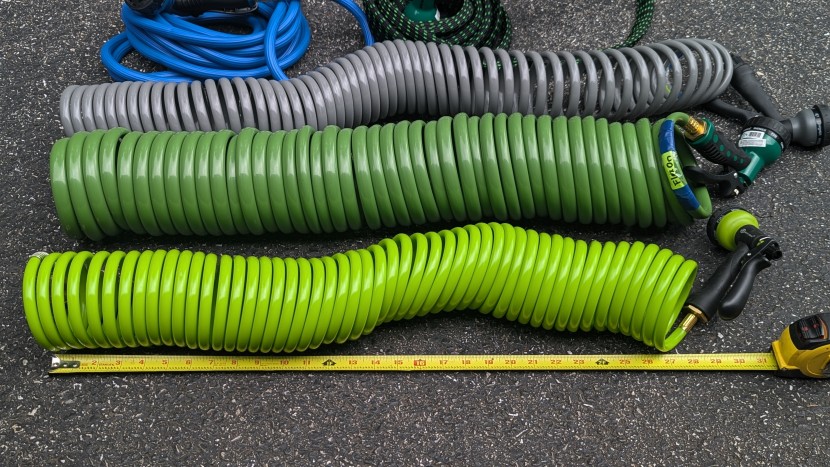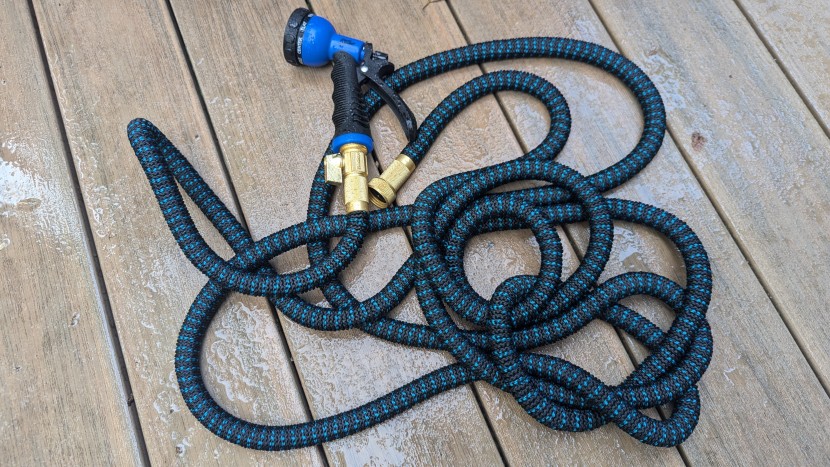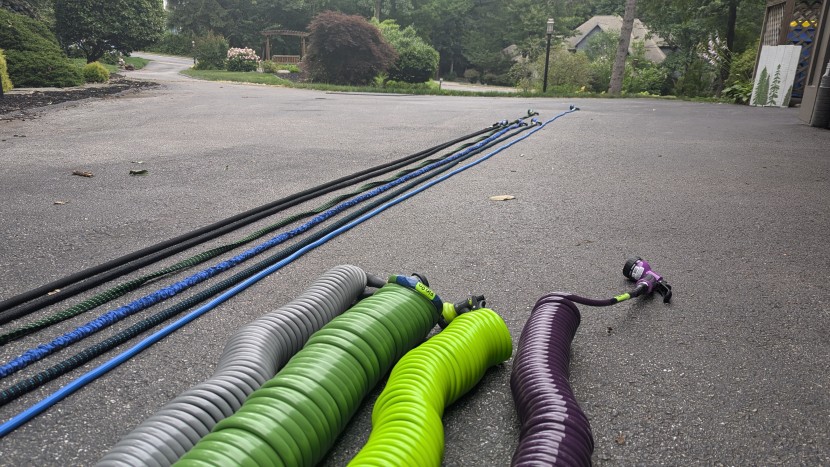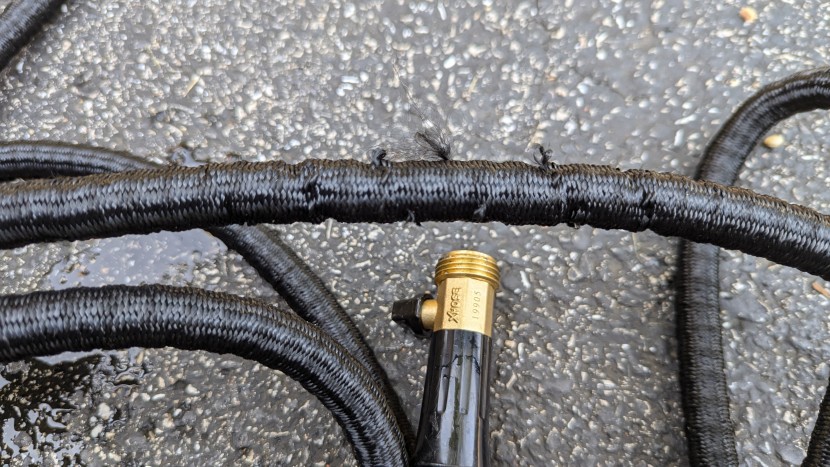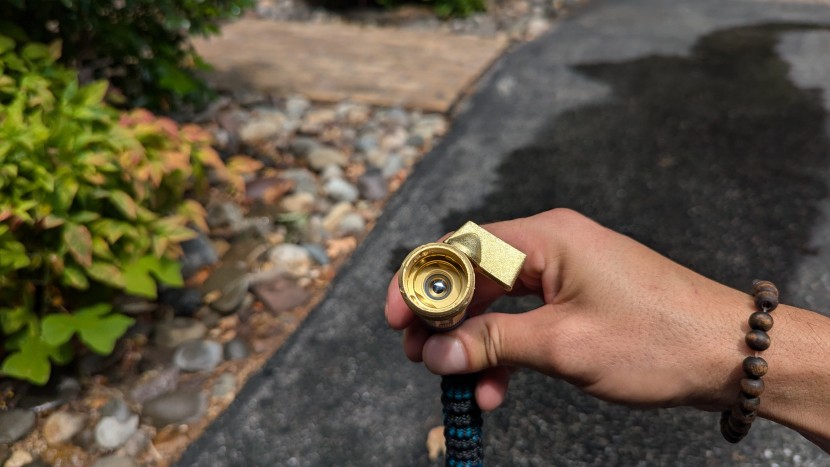Our expandable hose testing occurred over several months in the hot East Coast summer. We tested each hose in a variety of scenarios and under a number of different conditions. From watering plants on our porch to spraying down boats to washing cars and even dogs, we put each hose to the test. Throughout our testing process, we evaluated all aspects of using each hose, from the convenience of screwing it to a spigot, to how well it expands, contracts, and sprays. We kept an eye on any durability concerns as well. Then, we summarized our findings in this comprehensive review of the best expandable hoses.
Testing Metrics
We categorized our testing metrics for expandable hoses into four groups. Then, we applied a series of tests, measurements, and evaluations to rank each hose. Here, we document what those metrics and tests are.
Convenience
The ease of use is one of the most important factors when testing hoses. We weighted it at 35% of the overall score, which is equal to our next metric below. Because most hoses function in a similar capacity, we wanted to first understand which were the most user-friendly models.
We first tested the convenience of storage and how easily each hose shrunk or coiled back up to its original size. We stretched each hose to maximum length and then let it fully contract. Once back in its smallest state, we compared this length to the original. Hoses that shrunk back down to closest to their original size scored the best. We also tested how flexible and maneuverable each hose was to drag around our car, porch, and yard, awarding points for hoses that didn't inhibit our movement.
Performance
The performance of each hose was equally weighted with our first metric at 35%. Here, we tested to ensure that hoses could competently accomplish core hose tasks, such as screwing into spigots without leaking, avoiding kinking or flat spots, and providing ample spray performance.
We evaluated the valves and connectors on each hose, comparing how well they screwed onto spigots, and whether the design allowed us to fully tighten them, or if leaks persisted. We then drug each hose through a series of yard obstacles and around our cars to see if they kinked or twisted. We ran over them with a car to test for flat spots and manually forced them into kinked positions to see if they bounced back. Lastly, we tested the included nozzles and evaluated the spray performance and water pressure of each.
Construction Quality
Lastly, we assessed the construction quality of each hose and weighted this metric at 20%. Hoses are yard tools that are likely to be used and abused, and we wanted to make sure they would last through plenty of watering and gardening sessions. We drug them around on pavement, mulch, and grass, and even ran them over with a car — though not on the nozzles. We took note of any defects or issues that arose during testing. Lastly, to ensure we were looking at the full lifespan of the hose, we searched for common user reviews and complaints online and factored those into our evaluation.
Variety of Options
Because the right hose for the job can vary depending on the job, we evaluated the variety of options that each hose model is available in. We also annotated whether the hoses included a valve and nozzle. The variety of options that a hose was available in contributed to 10% of the overall score.
Conclusion
If you're short on storage space, having an expandable hose might be the solution you need instead of a watering can, or worse, a hose that is too short for your needs. These hoses are beneficial for their minimal footprint and light weight, but sacrifice performance for this convenience. Since there are subtle differences in design and features between models, we hope our review will help you find the one that fits your needs.

